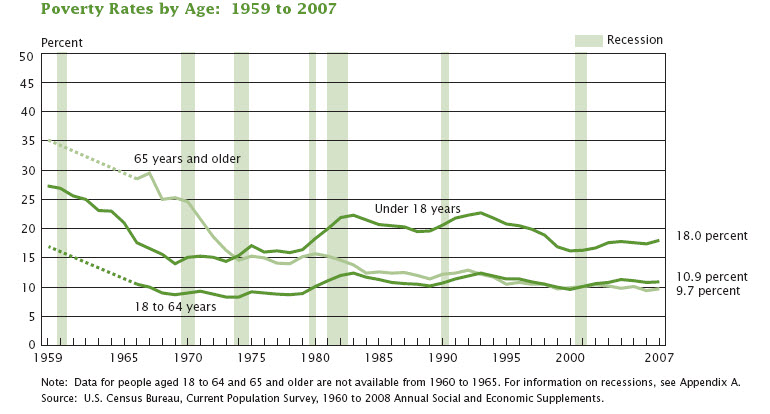Child Trends
Nearly 20 percent of American children and youth are living in poverty – a percentage that has been steadily increasing for almost a decade, according to a new statistical portrait compiled by Child Trends. The research brief also examines the consequences of poverty and reviews promising programs and policies for decreasing poverty levels.
Among statistics gleaned from the U.S. Census Bureau’s Current Population Survey for 2007:
* The poverty rate for children under the age of 18 increased from 17.4 percent in 2006 to 18 percent in 2007 – the highest it’s been since 1998. The highest child poverty rate in recent years was 22 percent in 1993 – the highest rate since 1964. (*See figure below)
* The actual number of children living in poverty increased by nearly half a million children from 2006 to 2007, to 13.3 million.
* Between 2003 and 2007, 8 percent of American children lived in deep or extreme poverty (below 50 percent of the poverty line). In 2007, the federal poverty level for a family of four was $20,650.
* More than twice the percentage of black (34.5 percent) and Hispanic (28.6 percent) children as Asian (12.5 percent) and white (10.1 percent) children lived in poverty in 2007.
* In 2007, 42.9 percent of children living with a single mother were living in poverty – more than five times the percentage for children living in married parent households (8.5 percent).
Research studies on academic achievement, school dropout rates, physical, mental and behavioral health, and economic outcomes have all linked poverty with lower levels of child well-being. Free, 12 pages. (202) 572-6000, www.childtrends.org/Files//Child_Trends-2009_04_07_RB_ChildreninPoverty.pdf.































